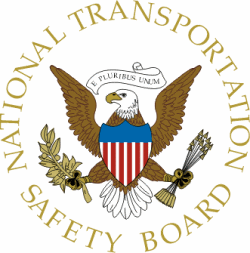Thu, Jun 06, 2013
Report: Evidence Suggests Right-Seat Pilot Attempted Aerobatic Maneuver At A Low Altitude
The NTSB has released its probable cause report in an accident involving a 2008 Cirrus SR22 which went down in a wildlife refuge near Boynton Beach, FL. According to the report, two friends were flying back from an air show along with two other airplanes when one of the two pilots on board the Cirrus attempted a low-altitude aileron roll. Both pilots on board the aircraft were fatally injured by the impact.

According to the probable cause report, the Cirrus was returning from an air show on November 13, 2011, and flying in formation with two aerobatic airplanes. A pilot of one of the aerobatic airplanes reported that, shortly after the accident airplane crossed the border of an unpopulated wetland area, the airplane's pitch smoothly increased upward to an angle of about 30 degrees. The accident airplane was flying at a global positioning system-derived altitude of 29 feet. The airplane then began a roll to the left, and, as the airplane rolled toward an inverted attitude, the pitch quickly began decreasing below the horizon. The airplane then began a rapid descent and impacted the marsh below in a 68-degree nose-down pitch attitude. Postaccident examination of the wreckage revealed no evidence of any preimpact mechanical malfunctions or failures with the airframe or engine that would preclude normal operation. Flight data recorded by a device onboard the accident airplane, along with statements provided
by witnesses, suggested that one of the pilots likely attempted to perform an aileron roll at low altitude and that the maneuver had been performed on at least two previous occasions, at higher altitudes.
The investigation could not determine which of the pilots was physically manipulating the controls at the time of the accident; however, given the right seat pilot’s substantial previous flight experience, the provisions of the exclusive agreement under which he rented the accident airplane, and statements from witnesses affirming that the pilot had attempted the maneuver in the past, it is most likely that the right seat pilot was acting as pilot-in-command at the time of the accident and was either manipulating the controls or directing the left seat pilot’s manipulation of the controls at the time. The right seat pilot had not logged any previous aerobatic experience, and witnesses described any undocumented experience he may have had as “low.” The manufacturer maneuver limits for the accident airplane model prohibit aerobatic maneuvers.
The airplane’s ballistic recovery parachute system likely activated during the impact sequence and was not activated by either of the occupants before impact given that the system’s safety pin was found installed; it is unlikely that activation of the system would have affected the outcome of the event. Additionally, based on observations of the airplane’s occupant restraint systems, recovered positions of the pilots’ remains, and preaccident photographs recovered from an electronic device onboard the airplane, it is unlikely that the right seat pilot was wearing his shoulder restraint. It could not be determined if this apparent lack of upper body restraint may have inhibited the right seat pilot’s ability to control the airplane during the maneuver.
The NTSB determined the probable cause(s) of this accident to be the right seat pilot’s decision to attempt a low-altitude aerobatic maneuver in a non-aerobatic airplane.
More News
Also: ANOTHER Illegal Drone, KidVenture Educational Activities, Record Launches, TSA v Shoes The Senate confirmed Bryan Bedford to become the next Administrator of the FAA, in a ne>[...]
Also: Sully v Bedford, Embraer Scholarships, NORAD Intercepts 11, GAMA Thankful Middle Georgia State University will be joining the Federal Aviation Administration’s fight ag>[...]
Also: DarkAero Update, Electric Aircraft Symposium, Updated Instructor Guide, OSH Homebuilts Celebrate The long-awaited Sonex High Wing prototype has flown... the Sonex gang tells >[...]
Also: Sully v Bedford, Embraer Scholarships, NORAD Intercepts 11, GAMA Thankful Middle Georgia State University will be joining the Federal Aviation Administration’s fight ag>[...]
30-Year USCG Veteran Aviator Focusing On Member Benefits The Vertical Aviation International Board of Directors announced its new leadership officers in April, and all began their >[...]
 Airborne 07.11.25: New FAA Boss, New NASA Boss (Kinda), WB57s Over TX
Airborne 07.11.25: New FAA Boss, New NASA Boss (Kinda), WB57s Over TX Airborne-Flight Training 07.10.25: ATC School, Air Race Classic, Samson School
Airborne-Flight Training 07.10.25: ATC School, Air Race Classic, Samson School Airborne Affordable Flyers 07.03.25: Sonex HW, BlackShape Gabriel, PRA Fly-In 25
Airborne Affordable Flyers 07.03.25: Sonex HW, BlackShape Gabriel, PRA Fly-In 25 Airborne-Flight Training 07.10.25: ATC School, Air Race Classic, Samson School
Airborne-Flight Training 07.10.25: ATC School, Air Race Classic, Samson School Rick Kenin New Board Chair of VAI
Rick Kenin New Board Chair of VAI



